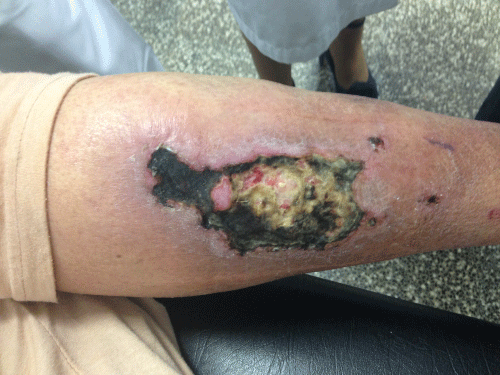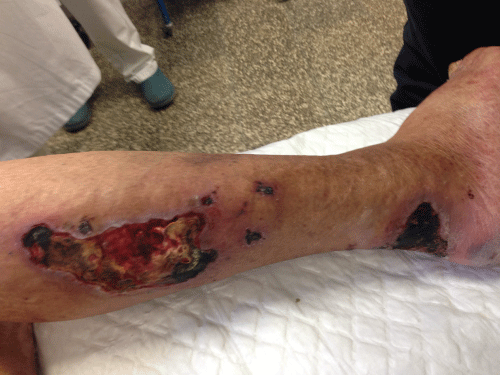
Special Article - Nephrology & Dialysis
Austin J Nephrol Hypertens. 2014;1(3): 1014.
Calciphylaxis in a Hemodialysis Patient
Fragoso A*, Pimentel A, Jerónimo T, Silva AP and Neves P
Department of Nephrology, Centro Hospitalardo Algarve, Portugal
*Corresponding author: Fragoso A, Department of Nephrology, Hospital de Faro, 8135-125 Faro, Portugal
Received: September 18, 2014; Accepted: September 21, 2014; Published: September 24, 2014
Calciphylaxis, also known as Calcific Uraemic Arteriopathy, is a rare and severe skin condition occurring mainly in end stage renal disease (ESRD) patients. This high mortality rate disorder presents a multifactorial etiology but is frequently associated with elevated calcium and phosphorus levels seen in secondary hyperparathyroidism (HPT) of ESRD patients. Our 65 year’s old, male, hemodialysis patient presented also other risk factors seen in this condition: obesity, diabetes and warfarin treatment. Initially presented painful, violaceous skin lesions in the lower limbs and then the lesions progress and enlarge rapidly from subcutaneous plaques through frank skin necrosis with deep, non-healing ulcers (Panel A and B). The diagnosis was confirmed by intravascular calcium deposition in the media of the dermal and subcutaneous arterioles. Although started intensive dialysis programme with risk factors control, wound care with surgical debridement and early treatment with sodium thiosulphate our patient was bi-amputated after 4 months.
Panel A: Calciphylaxis with frank skin necrosis with deep, non-healing ulcer.

